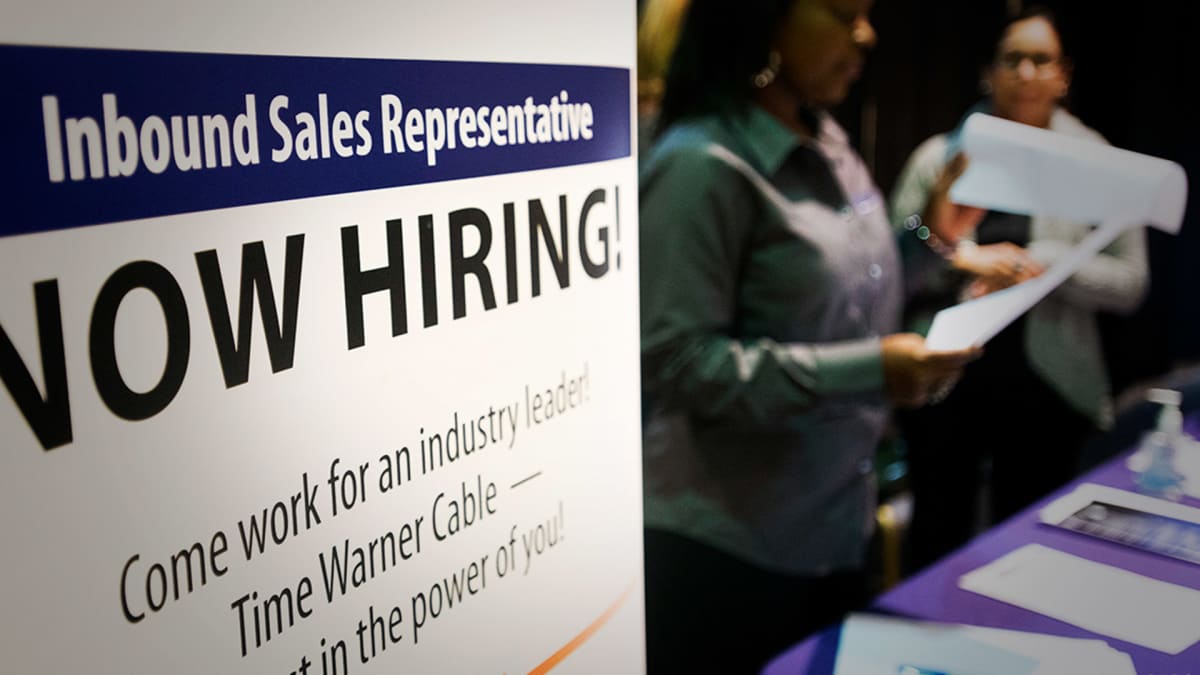
Federal Reserve Chairman Jerome Powell may have found a small nugget of comfort Thursday to add to the "totality of data" he and his colleagues will assess ahead of its next rate decision, but the job market remains the key puzzle in his effort to slow stubbornly high inflation and deliver a consistent message to Wall Street.
Powell wrapped-up his semiannual appearance before Congress with testimony to the House Financial Services Committee, during which he reiterated the need for "higher for longer" interest rates to slow the elevated level of domestic inflation.
But he also noted that incoming data would dictate the size of near-term increases and that no decision has been reached ahead of the Fed's March policy meeting.
"If -- and I stress that no decision has been made on this -- but if the totality of the data were to indicate that faster tightening is warranted, we would be prepared to increase the pace of rate hikes," Powell told lawmakers Wednesday in an unusual caveat to his prepared statement from his previous session on Capitol Hill.
“We have not made any decision about the March meeting,” Powell added. "We have some potentially important data coming up."
The first of that data trail arguably arrived Thursday with weekly jobless claims from the Bureau of Labor Statistics. The report showed new applications jumped 21,000 to 211,000 over the period ended March 4, well ahead of the Wall Street consensus forecast of 195,000.
That's bad news, of course, if you've lost your job. But it could take some pressure out of near-term inflation readings as companies feel less compelled to pay higher salaries in order to attract new employees.
Bad News Is Good News?
That's been one of Powell's chief concerns for several months, and it was worsened earlier this month by data showing so-called unit labor costs for U.S. companies surged 6.5% last year, even as overall productivity rates were revised lower.
That suggests employers are paying workers more for less output, a worrying condition that could suggest further wage-and-price spirals that aren't offset by improving economic growth.
"It’s not that we don’t want wage increases. We want strong wage increases. We just want them to be at a level that’s consistent with 2% inflation," Powell told reporters at the Fed's post-meeting news conference on Dec. 14.
"Right now, if you factor in standard productivity estimates, wages are running well above what would be consistent with 2% inflation."
Whether Thursday's claims figures represent a sea change in the U.S. employment picture, and by proxy an easing in wage-related inflation pressures, remains to be seen. But it certainly puts Friday's February nonfarm-payrolls report in sharp focus.
"While a tick up in jobless claims is a change from previous weeks, it remains to be seen if this is an outlier or a hint that the labor market may be softening, albeit slowly," said Mike Loewengart, head of model portfolio construction at Morgan Stanley Global Investment Office. "To many investors’ chagrin, the Fed has left open the possibility of a 50-basis-point hike, so all eyes remain on tomorrow’s job report."
But it doesn't make predictions any easier.
Payroll-processing group ADP's National Employment Report Wednesday showed 246,000 new hires last month, well ahead of forecasts. But markets largely dismissed the report given its poor track record of predicting official jobs-report figures after its methodology was overhauled late last summer.
Complicating matters, the BLS's monthly Job Openings and Labor Turnover Survey, known as Jolts, followed-up with only a modest decline in open positions for the month of January.
The survey showed open positions fell 410,000 to 10.825 million, but that still indicated that nearly 1.9 jobs are available for every worker represented in unemployment data. And the figures remain within touching distance of the 11.5 million record reached in May of last year.
Those figures, which the Fed closely tracks, are difficult to square with the Challenger, Gray & Christmas report that tallies monthly corporate layoffs. It showed the highest level of February job losses -- 77,770 -- since 2009.
The Challenger report in fact noted that U.S. companies, most of them in the tech space, have unveiled nearly 181,000 new job cuts so far this year, more than four times the total over the same period in 2022, as the Fed amped-up its hawkish rate rhetoric.
“Certainly, employers are paying attention to rate increase plans from the Fed," said Senior Vice President Andrew Challenger. "Many have been planning for a downturn for months, cutting costs elsewhere. If things continue to cool, layoffs are typically the last piece in company cost-cutting strategies."
Bigger Fed Rate Bets
That said, traders seem to be leaning in the direction of an aggressive February jobs tally, with market consensus holding at 205,000 and a headline unemployment rate of 3.4%.
Bets on a 50-basis-point (0.5-percentage-point) rate hike on March 22, which rose to around 80% prior to the weekly jobless claims data, slipped to around 74% in early Thursday trading, according to the CME Group's FedWatch. But they're still up from just 31% prior to Powell's appearance before the Senate on Tuesday.
The odds of a federal-funds rate that tops 5.5% in July -- including wagers that see it as high as 6.25% -- slipped modestly, as well, to around 80.3%.
Bond markets were quick to react, as well, with benchmark 10-year note yields retreating back below the 4% mark to 3.913% in early afternoon dealing, while two-year notes fell 14 basis points to 4.925%.
That gave stocks an early boost on Wall Street, although risk appetite faded in the afternoon session with the S&P 500 falling 37 points and the Dow Jones Industrial Average adding sliding 250 points.
Others are looking for a softer reading, given both the outsized January gain of 517,000 -- which is likely to be revised lower -- and the string of tech and industrial sector layoffs that have dominated recent headlines.
Bill Adams, Comerica Bank's chief economist, also argues the Jolts and weekly jobless claims data represent a welcome -- at least from the Fed's perspective -- easing in terms of job-market pressures. He forecasts a February non-farm-payroll tally of 160,000.
"The share of Americans quitting their jobs is back down to the lowest since the Great Resignation kicked into high gear, layoff announcements are the highest since 2009, and job openings are down 10% from their peak last March," he said.
"The unemployment rate is likely to rise over the course of the year as headwinds from high interest rates, corrections in housing and tech industries, slower inventory accumulation, and more cautious consumer spending weigh on the economy," he added.
ING analyst Padhraic Garvey says it may take a headline nonfarm-payroll reading below 150,000 to "swing the rate-hike pendulum back towards a 25-basis-point hike, especially if accompanied with some calming in wage inflation."
But he cautioned that the Fed typically "can have a heads-up on some data releases ahead of time, and if that's the case here, then a subdued payrolls outcome is less likely."







